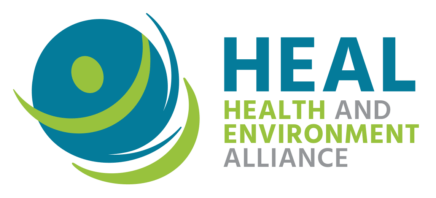Opinion by HEAL Poland Director Weronika Michalak: as the urgency to act on the triple crisis - climate change, pollution, and biodiversity loss - becomes increasingly clear, I hope that the Polish Presidency of the European Union, which began on 1st January this year, will set the course for decisive EU climate and environmental policies aimed at protecting people's health across Europe.
by Genon K. Jensen, Executive Director at HEAL
It’s encouraging to see that plastic pollution in oceans and environment has become quite a talked about topic. But an issue that is often overlooked is the toxic chemicals that can be found in plastic, and how they harm our health.
Here is the story about the hidden chemicals in plastic toys.
In 2018, HEAL together with colleagues from Arnika and IPEN tested over 500 toys made of recycled plastic. We found that many of these toys contained brominated flame retardants coming from electronic waste. These chemicals are known to affect thyroid function in children, resulting in disrupted brain development and attention deficits.
It seems only logical that the toys that our children play with do not contain toxic chemicals. Sadly, the reality is quite different: 10% of the toys and other plastic products we tested contained these brominated flame retardants, highly toxic chemicals that are banned in the EU.
This is only the tip of the iceberg.
Firstly, our daily exposure to low doses of chemicals in virgin or recycled plastics has a long-term effect on our health. Studies show that the chemical additives used in plastics, many of them hormone disrupting chemicals, are linked to serious diseases and health conditions including infertility, obesity, diabetes, breast and prostate cancer.
Secondly, the laws currently in place are too weak to solve the problem. For many years, the Health and Environment Alliance (HEAL) has been advocating for European and national decision-makers to make environmental laws that protect and promote our health. Decision-makers need to recognise that chemicals do affect our health, and build laws and regulation to prevent exactly that.
But what we are seeing instead is a huge discrepancy between the growing public movement against plastics pollution and the weak responses coming from political institutions.
Not only have decision-makers evaded the plastic problem for far too long, the main response they have given us to date has been focused solely on banning some single-use items. The restriction on microplastics that is currently in the making is a step in the right direction, but will not solve the larger problem. The bigger issue is the weakness of regulations that allows health-harming chemicals to be used in the production of plastics.
If we are serious about addressing the plastic challenge, the real issue to tackle is to cut plastic production and use, and to regulate the chemicals that are used to produce plastics. From toys to consumer products and food packaging, cutting our intake of plastic requires a serious detox on chemicals.
According to data from Eurostat, 75% of the chemicals produced in Europe are hazardous to our health. As a new European Commission and Parliament are taking office, this is the real priority to focus on in the next five years.
The new president of the European Commission, Ursula von der Leyen, has committed to proposing a European Green Deal within the first hundred days of office. She also committed to including a zero-pollution objective and to reduce our exposure to endocrine disrupting chemicals.
We welcome this commitment and hope it translates into four concrete points:
- Better, faster and more protective regulation of the chemicals that are going into plastics.
- Faster identification of chemical substances of very high concern, which are often used for the production of plastics.
- A change in the pattern of regulation, making it impossible to use chemicals of the same family with very similar properties.
- Making sure that a substance of very high concern can never make its way into food packaging, toys or other consumer products. This also means getting rid of the current double standards set for virgin versus recycled plastics, or for European versus imported products.
Our message to European institutions is clear: zero plastic production means strengthen laws for a serious detox on chemicals.



